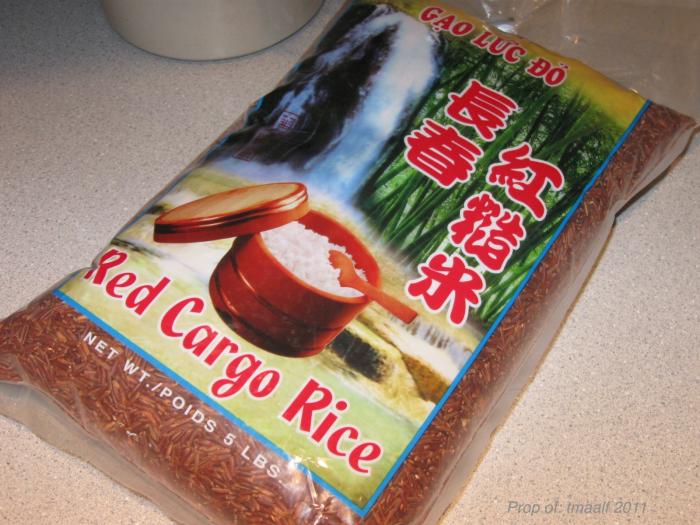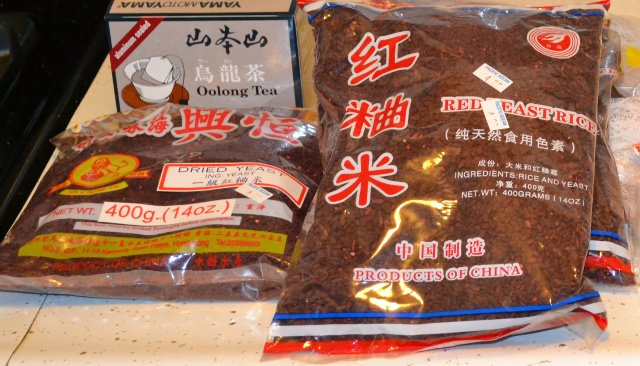Aged some unpasteurized, chinese balled, 1:1, 70s, jasmine wine for a few months in the fridge.
Very efficient yet descriptive description!

Aged some unpasteurized, chinese balled, 1:1, 70s, jasmine wine for a few months in the fridge.
I bought some potassium sorbate for a batch of Skeeter Pee. I've never used the stuff (I usually stick to beer and rice wine) it says to prevent renewed fermentation when sweetening. Anyone used this in the rice wine after back sweetening as an alternative to pasteurization??
Good info. Do you just stir it up or shake the bottle to mix it back up after you pasteurized?It may interest everybody on here to note two things. Pasteurization at 160f for 10 minutes did not alter the flavor of the red rice wine. It did cause the liquid to separate into a clear and cloudy portion in the bottle. This happened as soon as the bottles cooled after pasteurization.
Accidic said:I should note that I've been bringing it up to the 160s but only for a moment and then took it off the burner and cooled it relatively quickly afterwards. I've not been letting it sit @160 for 10m and so far I've not had any renewed fermentation or issues with Lactic/Aceto. My last batch I bottled @80ish degrees and one of the bottles I just did as a large 2L clear bottle so that I could watch it. After it was chilled in the fridge, the bottle contracts slightly and it's been sitting there for 10 days with no change. I intend to let that one sit for 10-12 weeks keeping an eye on it but it seems to have done the job.
Per engineering toolbox it says you should only need 15s at 161 degrees and since I took it off the burner around then and got the sink situated to put it in a cooling bath I'd say it probably had 30-45s at least and probably hit 161 before starting to drop anyway. The link referred to is here: http://www.engineeringtoolbox.com/pasteurization-methods-temperatures-d_1642.html










LabRatBrewer said:Any chance this is RYR?
That actually looks more like a red-grain rice. RYR is usually a more vivid shad of red, and it will have a very flat, rough surface.
I have not opened any of the bottles yet. I had planned to shake them up before serving.Good info. Do you just stir it up or shake the bottle to mix it back up after you pasteurized?
I hope to "harvest" my first batch over the weekend, it'll be 3 weeks on Saturday. Not sure how I want to flavor it though, still deciding.
I should note that I've been bringing it up to the 160s but only for a moment and then took it off the burner and cooled it relatively quickly afterwards. I've not been letting it sit @160 for 10m and so far I've not had any renewed fermentation or issues with Lactic/Aceto. My last batch I bottled @80ish degrees and one of the bottles I just did as a large 2L clear bottle so that I could watch it. After it was chilled in the fridge, the bottle contracts slightly and it's been sitting there for 10 days with no change. I intend to let that one sit for 10-12 weeks keeping an eye on it but it seems to have done the job.
Per engineering toolbox it says you should only need 15s at 161 degrees and since I took it off the burner around then and got the sink situated to put it in a cooling bath I'd say it probably had 30-45s at least and probably hit 161 before starting to drop anyway. The link referred to is here: http://www.engineeringtoolbox.com/pasteurization-methods-temperatures-d_1642.html
This is why I maintain the temperature for 10 minutes, to compensate for the difference in the water temperature and the liquid in the bottles.That is a very handy reference. One thing to keep in mind though, is that temperature describes the heat the liquid gets up to, so you would still want to hit that temp on the inner most part of the bottle for the time described before pulling away from the heat.
Any chance this is RYR?
Agreed, doesn't look like RYR to me.That actually looks more like a red-grain rice. RYR is usually a more vivid shad of red, and it will have a very flat, rough surface.
Well, Ill make a batch with a cup of it added. Maybe it'll just add color. I also picked up a bag of black glutinous rice. (on adding color, there was a bag of bright green "dried rice flakes" that were tempting me).I have not opened any of the bottles yet. I had planned to shake them up before serving.
This is why I maintain the temperature for 10 minutes, to compensate for the difference in the water temperature and the liquid in the bottles.
Honestly though, 160 is more then you need to kill off the yeast and most bacteria. I based my temps off of the FDA pasteurization recommendation for apple juice.
Agreed, doesn't look like RYR to me.
Here's a picture of just the RYR. Those are the two package types my local Asian market had. The light in the picture is a little yellow. It's actually much closer to burgundy then any shade of brown.Well, Ill make a batch with a cup of it added. Maybe it'll just add color. I also picked up a bag of black glutinous rice. (on adding color, there was a bag of bright green "dried rice flakes" that were tempting me).
Anyone have a picture of the package that RYR comes in? Maybe with a picture I can find it. I think I've read the whole thread, but sorry if its already here.

Here's a picture of just the RYR. Those are the two package types my local Asian market had. The light in the picture is a little yellow. It's actually much closer to burgundy then any shade of brown.
What do you mean puncture the cap?
This is my latest batch. Turned out quite well. I got lucky when I went to the store and a 5lb of jasmine rice was on sale for 3 bucks. Score!
This is my latest batch. Turned out quite well. I got lucky when I went to the store and a 5lb of jasmine rice was on sale for 3 bucks. Score!
Are they flavored at all? What made the red one...so red? Have rice cooking now because my son and his friends ate the last batch. I left the house for a while, came home to the smell of fried rice. It was tasty, but this Mom was irked, so they poured me a glass from a bottle of peach port they picked out (which they really got into trouble for). They like the rice wine immensely and a few of them make it now, they said it is easier than 'all the crap you really have to do to make wine'. I will make wine/beer makers out of these 22-23 year old 'kids' yet.
CreamyGoodness said:Just checked on mine and its humming along nicely!! Only issue is that there is so mold on the top. Can I just remove this or is it screwed?